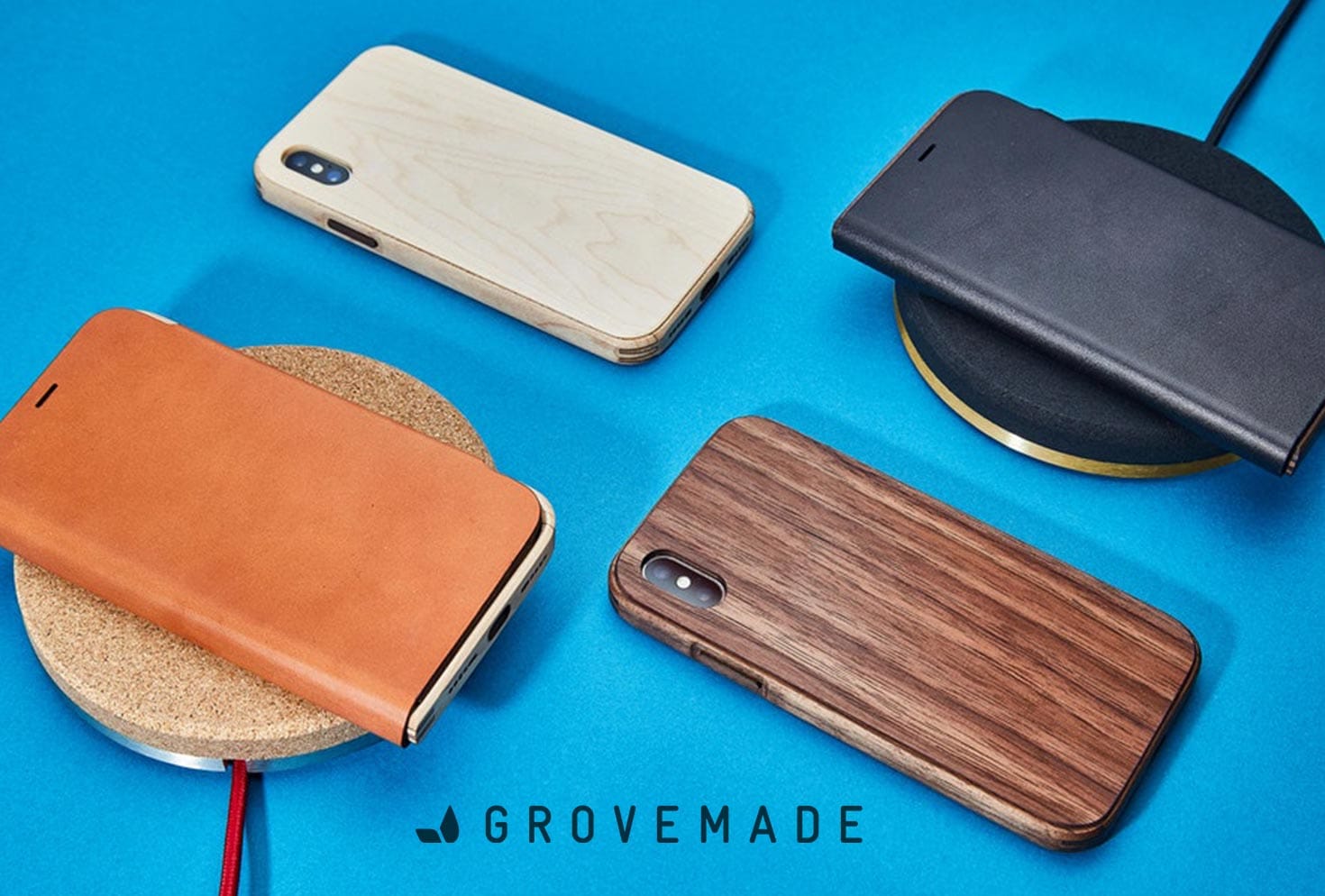
Meet Fluffy, Your 800-Pound Gorilla
Having a large customer the size of an 800-pound gorilla drives rapid revenue growth, but it also carries hidden dangers for your business.
Learn how to tame it.

In 2010, Ken Tomita was on top of the world. Apple had just released the iPhone 4 and was swiftly becoming the only relevant player in the cell phone space… but the devices were expensive, fragile, and in need of protection. Fortunately, Ken’s company, Grovemade, offered a solution to this prevailing issue: quality iPhone cases, made of natural materials and featuring laser-engraved artwork.
Put simply, business was good.
Gizmodo featured Grovemade in an article about iPhone cases, and (in an era of little media fragmentation) such a placement could yield immediate and overwhelming website traffic. Sales skyrocketed overnight, and Ken’s small design shop suddenly became a multi-million-dollar business.

“For those first couple of years, we were up to our necks behind in orders,” Ken recalls. “We struggled to even keep up with demand – we were doing zero marketing, they were just selling on their own.”
In short, Grovemade had produced the right product, at an opportune moment in the marketplace, and were riding that lucky demand wave into the sunset. The product sold itself, business was booming, and this was naturally the part where Ken could put his feet up and relax that he had built a thriving company… right?

“But we knew it was lucky,” says Ken. “We didn’t start buying yachts or anything. We were in the right place at the right time, and that kind of lightning strike happens occasionally in business. But we also had the self-awareness to know that it probably wouldn’t happen again – and moreover, that our business model would eventually fail.”
What Ken knew at the time – and what many business leaders may have ignored in his position – was that the ground was shifting beneath his feet. Competitors were starting to flood the industry with cheap knockoffs from China, and Grovemade soon went from being the only producer of bamboo iPhone cases to being awash in a saturated and commoditized market. Not to mention, “We were so reliant on Apple. Every year the iPhone model came out, we’d have a massive surge in sales… but then we’d be bleeding in years that they didn’t release a new one.”
Ken’s story illustrates an important phenomenon we see across many industries, and a critical leadership skill: the willingness and ability to look “around the corner” to see what’s coming next – even when (and especially when) what’s happening now seems to be working so well.
Around Ken’s “corner” in this case was an increasingly red ocean, and an inherently risky business model which made his success contingent upon Apple’s. But these are just two examples of any number of market forces that can impact your business’ future viability. Consider some others:
A subsidiary of General Electric, GE Capital got its start writing loans against equipment to customers who couldn’t always get financing from traditional banks – but ended up becoming a global empire that provided half of General Electric Co.’s profit, and effectively the country’s “seventh-largest bank.” However, this boom was only made possible by a regulatory niche – and when Washington toughened its stance on financial regulations after the recession, GE Capital was forced to dismantle what amounted to $360 billion worth of loans, leases, and other assets.
If you’re in the skilled trades, you’ve probably already felt this squeeze: Baby Boomers, the largest generation which comprises much of the workforce in the skilled trades, are retiring at a rate of 10,000 people a day – and will continue to do so for at least another decade. In an industry that requires years of training and apprenticeship, the lagged effect of this transition could echo indefinitely.
During the 1999 holidays, Toys R Us was one of the world’s largest toy retailers – and so inundated with online orders that it fell behind on shipping. This led to the company outsourcing their ecommerce to Amazon just a few short months later. The deal, one of the first of its kind, gave Amazon the exclusive rights to sell Toys R Us products on its website.
The problem? By relying on Amazon rather than curating its own e-commerce platform and identity, customers were being trained to go to Amazon to buy toys – and the connection to Toys R Us became less and less important. Toy manufacturers, and later discount chains, began marketing directly to the consumer – slashing prices to bring them in – and Toys R Us quickly tumbled. We all know the end to this story: the company filed for bankruptcy and sold off most of its assets in September of 2017.
You’ll find no shortage of examples here – like taxi cabs being disrupted by ride sharing services like Uber and Lyft. The industry could’ve come together to leverage the infrastructure they already had to create an app-based environment, but instead tried to legislate their way around something that the customers were demanding. The result? Litigation was not enough to keep these apps out of major cities, and the taxi industry wasted precious time and resources fighting the inevitable. Today, taxi companies are left picking up the scraps while the market has shifted to an entirely different (tech- and user-centric) way of buying.
The answer to this question, invariably, is a resounding “yes.” Thanks to the internet, customers are doing more research now than ever before – which means that much of the sales process takes place before they ever pick up the phone. This, too, is an example pervasive across industries – from healthcare to car buying, companies have had to get more strategic about communication information available before direct contact. And perhaps more importantly, companies are shifting their resources from hardcore sales (persuasion-based) to a system of education and marketing to the more educated (end empowered) consumer.
The common thread here, of course, is the necessity to have tough conversations about the external or internal forces at play in your business – and how they could potentially impact your company one, five, or ten years into the future.
“Everybody knows this,” Ken Tomita reflects. “But nobody takes action, because you have a successful company and you’re killing it. And the default position of any business is to look at short-term interests. It takes a gamble and some courage, and often leaving some money on the table.”

In Ken’s case, it meant acknowledging that what was making the company money today would eventually become a liability – even though sales were still pouring in when this decision had to be made. It meant getting clear about the type of company they wanted to be (committed to quality products and design), and the type of company they didn’t (a commoditized iPhone case producer). It meant a deep dive into the types of customers they wanted more of – including a cross-country road trip to meet some of them in person – and finding the intersection between what they wanted and what Grovemade was excited to create. And ultimately (this is the part where things get a little uncomfortable) it meant saying goodbye to their artist series iPhone cases.
“We had to ask ourselves, ‘What makes us unique? What are we good at?’ Originally it was the artwork, it was cool and novel. But then the thing that had propelled us to success ended up strangling us, because your value proposition can’t be something commoditized. What made us unique wasn’t the laser engraving, it was the craftsmanship of the case itself.”
- Ken Tomita, CEO & Co-founder at Grovemade
That’s right: the laser-engraved cases which had grown the business to $2.5mm overnight – the product that had comprised 80% of Grovemade sales – was being discontinued. And in fact, the company began investing heavily in the R&D of products removed from iPhone cases entirely – from speakers to pen cups to belts.

But this transition was hardly an easy one. “If you looked at our Facebook page, it looked like we were going down in flames,” Ken recalls. “‘You guys are sellouts, I used to like you guys but not anymore.’ I can’t exaggerate how much flack I got from people, even my peers in the business community. The money [in phone cases] was just so easy. We could have had near-guaranteed success if we continued with iPhone cases and expanded to making cases for Androids and other smartphones. And sure, we could’ve made a lot more money in the short-term… but we wouldn’t be here now to talk about it.”
And Ken’s intuition was right on the money: iPhone sales went down consistently for three quarters in 2016 – leading to a $1mm loss in annual revenue for Grovemade. While this was still a major financial hit for the company, they had already begun laying the foundation for the shift toward non-Apple (and non-phone case) products, and were able to re-build the business upon that stronger foundation in the last two years. Today, they are nearly back to their highwater revenue mark – but now with iPhone cases comprising only 10% in sales.
The lesson? Whatever the corner you’re facing, part of your role as a business leader must be to look around it, anticipate what changes could impact your business, and act now. This is especially important if your company is doing well financially, since profits have a tendency to blind us to hard truths.
In other words, as Ken puts it:
“The only thing I know for sure is that things will change. Expect change. Embrace change. Build a business around change, so that you are agile and can adapt to it. If you do that, you can withstand anything.”

Get insights like this straight to your inbox.